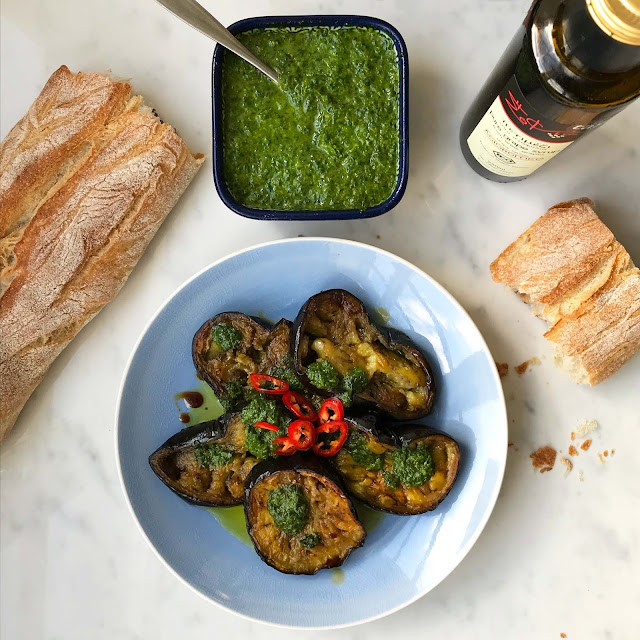 |
| Zhoug (a Middle Eastern spicy sauce) |
I had this leftover bunch of fresh coriander leaves that I didn’t want to go to waste so I grabbed a few other ingredients from my fridge and came up with this zingy sauce. There are lots of variations to the traditional recipe. You can add cumin, cardamon, black pepper, fresh red chilli instead of green etc.
⠀⠀⠀⠀⠀⠀⠀⠀⠀
In a food processor (I could have used the pestle and mortar, but time was not on my side) I blended the coriander (stalks and all), 1 deseeded green chilli and 2 small garlic cloves. With the blender on, I added about 50ml of Extra-virgin olive oil, a juice of 1 lime and a juice of 1 tangerine. I then seasoned with sea salt. Zhoug is ready!
⠀⠀⠀⠀⠀⠀⠀⠀⠀
To use it straight away, I sliced an aubergine and roasted it with EVOO and some sea salt. When it was ready, I drizzled the slices with some grape syrup* and a generous amount of zhoug. Make sure you have a nice piece of bread to mop it all up.
* I get mine from @oliveology. You can also use maple syrup or honey instead.
⠀⠀⠀⠀⠀⠀⠀⠀⠀
You can mix zhoug with yoghurt, eat it with falafel, use it as a dip, add on top of fried eggs, mix it with grains, use it in marinade etc.
⠀⠀⠀⠀⠀⠀⠀⠀⠀
The aubergine dish ticked all the boxes to my lunch. It's Mediterranean, nutritious and zero waste.
A healthy note: Coriander (Coriandrum sativum): It has anti-inflammatory properties and it is often blended in herbal remedies to help fight cold and flu. It may also facilitate the digestion of carbohydrates, alleviate indigestion and colic, lower bad cholesterol and prevent halitosis.
Till next week!



